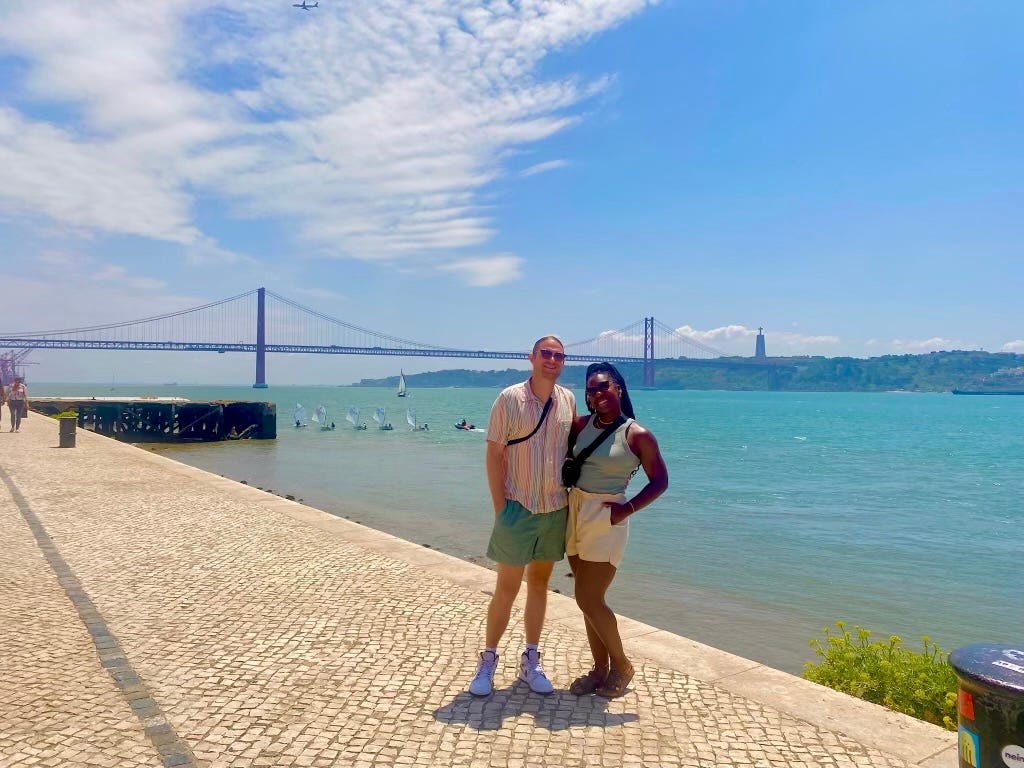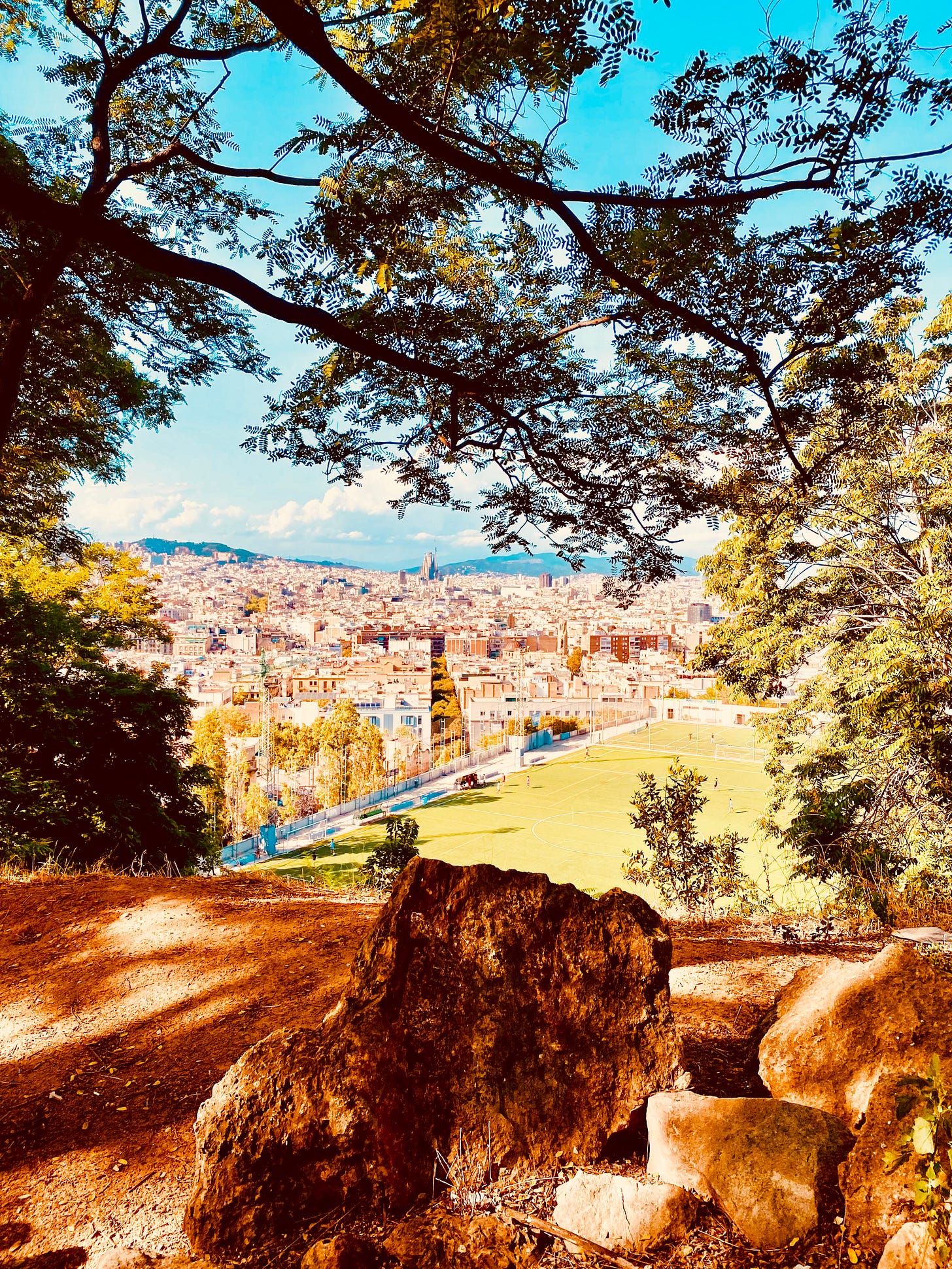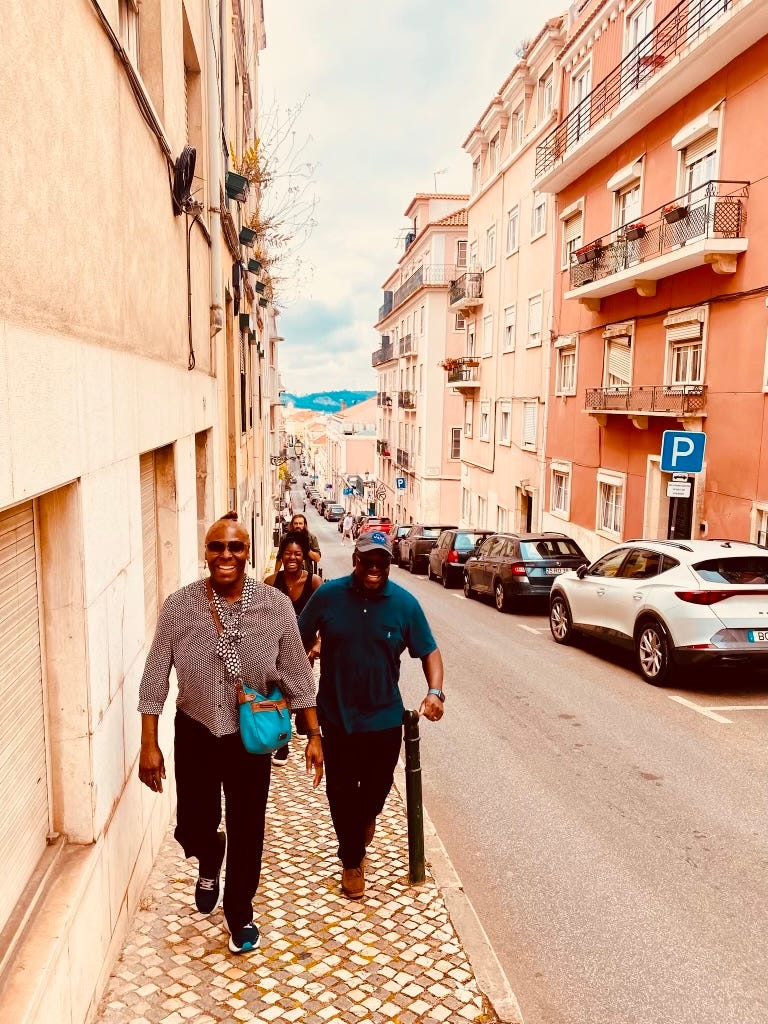Six countries, four months, one decision.
How two summers abroad narrowed our search for a new home to Portugal and Spain.
When my wife Ashley and I boarded our flight home after our first trip to Europe, where we spent two months traveling by train through the Netherlands, Belgium, France, and the U.K., we told ourselves we’d be back. At the time, we weren’t exactly sure what that meant.
Maybe it would be for another summer abroad or a future sabbatical. Maybe we’d become those seasoned travelers who were perpetually jetsetting, who always had fun travel stories to share at dinner parties.
What was clear, though, was that our lives would never be the same.
We felt too good physically and mentally to simply slip back into our old routines. Experiencing places where daily life revolved around public spaces and human connection had sparked a zest for more in us. Cities designed for people, not just for cars speeding from point A to B, made everything feel more intentional, more alive. Once we saw it, we couldn’t unsee it. And we couldn’t help but wonder why we’d accepted anything less for so long.
We tried (and failed) to bring this more connected lifestyle back home (you can read more about our first trip to Europe and our efforts to live a European lifestyle in America in my first Substack essay). We walked more, ate healthier, and prioritized more leisure time outside the home, but it felt like swimming against a current too powerful to overcome. In Europe, downtime and connectivity were woven effortlessly into daily life. In the U.S., attempting to live this way—striving to feel more rooted in our neighborhood and city—only left us feeling more isolated than before.
There are other U.S. cities, including those on the Northeast Corridor, Chicago, and San Francisco, that offer more of the lifestyle we craved. But walkability and public transit were only part of the equation. To afford living in one of those cities, which are some of the world’s most expensive, we’d have to double down on an American work culture where 40 hours a week feels more like the minimum than the standard. What would be the point of having access to livable neighborhoods if we’re too busy, burnt out, or tethered to our screens to actually enjoy them?
Beyond how costly the handful of walkable, transit-oriented cities are in the U.S., the broader realities of American life—rising inequality, growing political instability, and ever-present gun violence—made the idea of building a future overseas more appealing.
So we started planning a second trip—not as tourists, but as prospective emigrants. A proper scouting trip. Could we really make a life abroad? Where would we belong? And what would we have to give up to make it work?
While Europe may have seemed like somewhat of a monolith on our first two-month stay given commonalities like walkability, third places, and relative safety, it’s far from one. It’s not uncommon to be a short train ride away from a completely different language and culture on the continent. That said, we needed to be strategic about which country we’d choose.
On our first trip, we loved the bicycle infrastructure in Amsterdam, the cafe culture in Paris, and the cultural diversity and ample green space in London, but our research taught us that the Netherlands, France, and the U.K. aren’t particularly easy countries to immigrate to.
Not to mention, we stayed in each city during the summer, experiencing the most vibrant version of each. What would living in London feel like in winter, with the sun lost behind endless overcast skies? Probably like a completely different city than the one we experienced on a warm August afternoon picnicking on Primrose Hill.
Affordability was also a huge consideration, as the housing shortage is driving up costs in every major city in the U.S. and Europe. The strain has pushed prices beyond what we could comfortably afford in London and Amsterdam in particular, especially considering we’d have to leave our full-time jobs to make the move a reality.
With the visa process, weather, and affordability top of mind, Portugal and Spain emerged as the two leading candidates. We planned to stay one month in each country in the summer of 2024.
Like our summer 2023 trip, we spent plenty of time immersing ourselves in the local cultures, wasting away afternoons sipping galões at quiosques in Lisbon and indulging in late-night dinners over cava at tapas bars across Barcelona. We set up coffee chats with locals and Americans living abroad alike to get the full spectrum of perspectives. We made a conscious effort to steer clear of overcrowded tourist haunts, searching for an accurate picture of daily life, not just vacation.
We also invited Ashley’s parents to come spend a couple of weeks with us in Portugal. If we were going to move abroad for the long haul, we wanted to tempt my in-laws to do the same when they retire in the not-so-distant future. Putting down roots of our own would be easier if we knew we’d eventually have family nearby.
Over the span of two months, many moments made us pause and wonder if Portugal or Spain could be home. In Porto, sunsets over the city’s terracotta rooftops were so stunning they earned applause. In the Algarve, Ashley’s parents—usually busy with never-ending home improvement projects back in North Carolina—dozed off for hours on our balcony after days filled with sunshine and white wine. Along Catalonia’s coast, we swam in crystal-clear waters by day and indulged in some of the freshest seafood we’ve ever tasted at night. And in Barcelona, my urbanist heart was full as we meandered through tree-lined, pedestrian-only streets—spaces designed for people to congregate, relax, and move freely, where the constant roar of traffic didn’t drown out the hum of conversation and eruptions of laughter.
But it was Lisbon that really won our hearts.
I wish I could give some universal reason why Lisbon is superior to the other cities we scouted, why it’s an incredible choice for others looking to flee hyper individualism, car dependency, or social isolation. Truthfully, though, moving to Lisbon was only possible for us because Ashley had enough career experience and connections to pivot to remote freelance work for clients throughout the EU and in the U.S.. We’d be taking a massive pay cut leaving our full-time jobs, but we could earn enough through our LLC to afford our monthly expenses in Lisbon, where the cost of living is much lower than major cities back in the States.
That said, the salaries in Portugal are some of the lowest in Western Europe, and we didn’t qualify for the Non-Habitual Resident (NHR) tax regime that Portugal put in place to attract foreign residents by offering reduced tax rates and exemptions. We would have likely opted for elsewhere in Europe if the local job market were a factor.
Besides Ashley’s ability to work from anywhere, there was another reason specific to us that made Lisbon feel like it could be home: as an interracial couple, we never felt out of place.
Porto may have been the most beautiful city we’ve ever visited, but it was much less diverse. In Lisbon, Ashley connected with a group called Black in Portugal, where she had conversations with several Black Americans who had moved out of the States for some of the same reasons we were planning to. We also met Black Portuguese people and Black immigrants from Brazil, Mozambique, Angola, and Cape Verde. And we frequently passed other interracial couples like us while out and about exploring the city.
There was a pretty immediate vibe shift when we flew to Spain. We noticed a lot of staring, which is not something we’re entirely unfamiliar with in the U.S., but it still caught us off guard since we hadn’t experienced that on such a consistent level anywhere else in Europe. No one made rude comments (that we understood at least) or treated us unfairly, but it was still unsettling, especially for Ashley, to feel like we were under constant surveillance.
We felt as though people were more friendly and accepting in Portugal in general. One incident in particular blew us away.
We were at the train station in Porto waiting for our train to Lisbon when Ashley suddenly realized she had left her phone in an Uber. Since we had only purchased an international phone plan on her device (I was using her hotspot to access wifi on mine), we were in a bit of a precarious situation.
We tried to stay composed and think through next steps, but several people must have noticed our anxiety and stopped to offer us help. One assisted us in calling Uber to report the phone as missing. Another tried giving the emergency hotline a ring to see if there was a way to track down the driver. Finally, thanks to a very kind middle-aged man letting us use his hotspot so I could access the Find My Phone app, I was able to ping Ashley’s device and get the Uber driver on FaceTime. She didn’t speak much English, and we had only just started learning Portuguese, so the man translated for us, convincing the driver to return to the station with the phone. She made it back in just enough time for us to catch our train.
It wasn’t just that so many people stopped to help us, it was the kindness and patience with which they did, each offering encouragement as they stood with us to brainstorm potential solutions. It was as if our problem was also somehow theirs. I just can’t imagine a scenario where we would have been treated with such care by strangers in the U.S.
I couldn’t imagine it because I couldn’t find that level of kindness and concern for a stranger in myself. If the roles were reversed, I would have been the impatient American, looking the other way, more preoccupied with boarding my train.
The individualistic culture I was running from was still alive and well in me.
That moment made something clear: if I wanted a life built on connection, I’d have to become an active participant in creating it, not just a seeker and beneficiary of it. Hanging out at cafes and plazas was the fun part of the community-oriented lifestyle I was after. The hard part would be showing up as a good neighbor, putting aside my agenda and priorities when someone needed a helping hand, a moment of my time, or just to feel seen and appreciated.
Moving abroad, for me, wasn’t just about finding the right place that gave me everything I wanted—it was also about feeling challenged to adapt and grow into someone who lived out the values I professed to care so deeply about.
Two and a half months into our move to Lisbon, I can’t say I’ve fully become that person yet. But I feel nudged in that direction every day. Maybe finding the “right” place—or any “right” big life change, really—has less to do with ease and more to do with friction. Maybe the discomfort is the point. It means stretching, softening, becoming something more complete. In Lisbon, we’re doing a lot of that: leaning into a new language, new friendships, new rhythms.
None of it is easy. And this path we’ve chosen is certainly not for everyone. But maybe that’s exactly why it feels right for us.
Thank you for reading! If you’d like to follow our journey in Portugal more closely, consider upgrading your subscription. My essays will always be free to the public, but I’ve started a photo journal with commentary and observations on my paid-subscriber chat. Yearly paid subscribers will also have access to detailed itineraries of the cities we visited.
Here are some other ways you can support my work:







Cody, I really enjoyed reading about your decision-making process in choosing Portugal! Wishing you all the best in your expat journey.
Hi Cody,
I enjoyed reading your piece and would love to cross-post your work and share it with our readers and subscribers on our Substack publication, Portugal Calling.
https://portugalcalling.substack.com/
All the best, cheers,
Rui